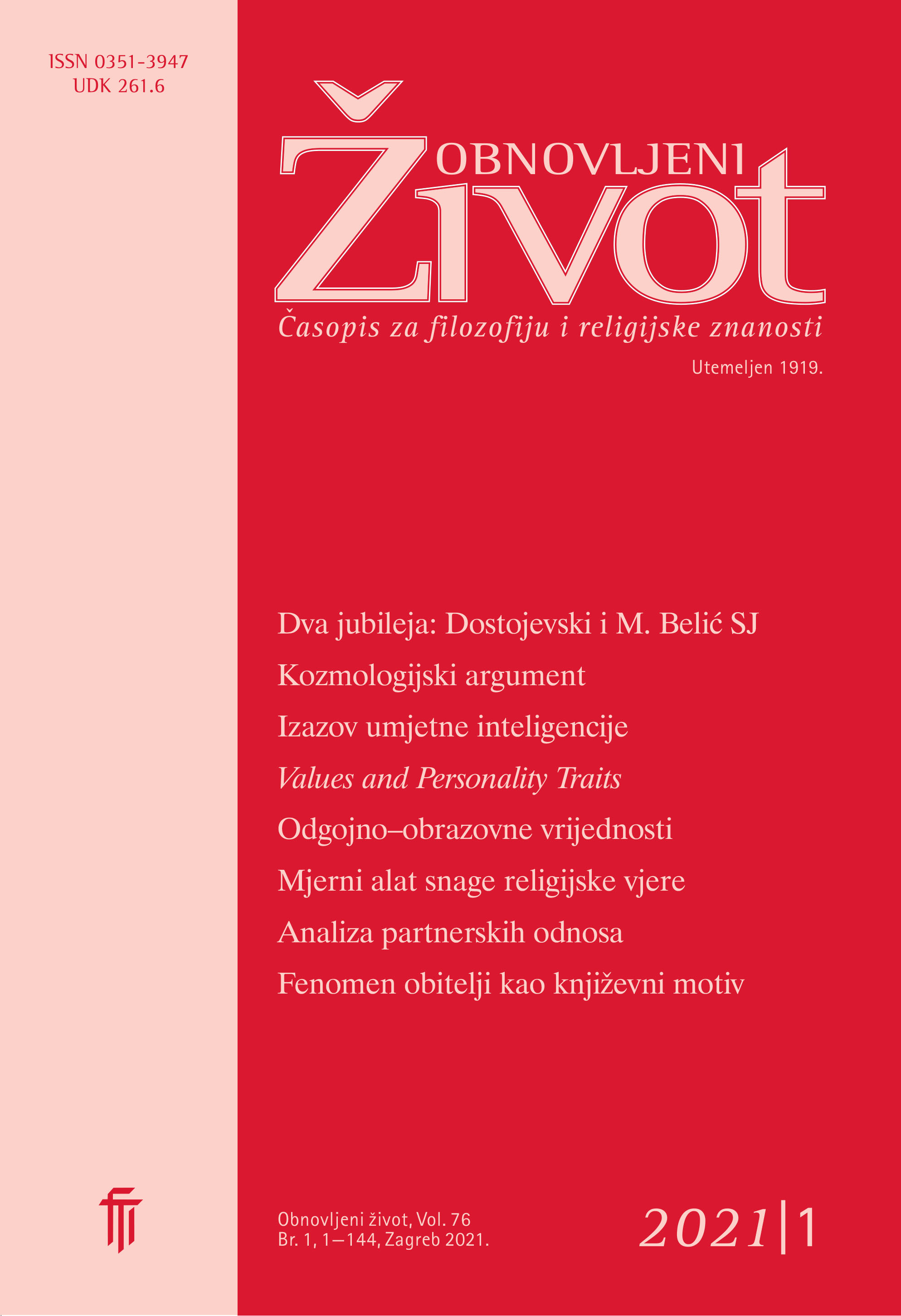Values and Personality Traits as Predictors of Catholic Religiosity
Relations Among the Croatian Ethnic Minority in Vojvodina (Serbia)
Keywords:
values, religiosity, personality traits, Croatian ethnic minority, Catholics, VojvodinaAbstract
The main goal of this study was to investigate the dimensions of value orientations and personality traits that underly Catholic religiosity. The survey was carried out on a convenient adult sample of members of the Croatian ethnic minority across the Autonomous Province of Vojvodina in the Republic of Serbia (N = 189); 97% were members of the Roman Catholic Church. Four measures were included in the questionnaire: Religiosity, the Schwartz Value Scale, the Big Five Personality Inventory, and the Dark Triad of Personality. Multiple regression analyses were conducted to explore how value orientation and personality traits impact religiosity. Conservation (Traditional) values and Self–Transcendence values emerged as significant positive predictors, whereas Openness to Change values emerged as a significant negative predictor of religiosity. Agreeableness and Conscientiousness emerged as significant positive predictors, whereas Extraversion emerged as a significant negative predictor of religiosity. Machiavellianism and Psychopathy were also shown to be significant negative predictors of religiosity; in order, Psychopathy, Machiavellianism, and Conservation values accounted for 23% of the variance in Catholic Religiosity. We found that the Schwartz value orientations had a somewhat greater explanatory power than the Big Five personality traits, and that the Dark Triad of personality traits had a greater explanatory power in predicting Catholic religiosity than either the Schwartz value orientations or the Big Five personality traits. We argued that religiosity is not generally more correlated with values than with personality traits, as is often suggested. It depends primarily on the type of personality trait models involved, i.e. its psychopathological underpinning.
Downloads
Published
Issue
Section
License
Jednom prihvaćeni članak obvezuje autora da ga ne smije objaviti drugdje bez dozvole uredništva, a i tada samo uz bilješku da je objavljen prvi put u Obnovljenom životu. Uredništvo će obavijestiti autora o prihvaćanju ili neprihvaćanju članka za objavljivanje.
Članci objavljeni u časopisu se, uz prikladno navođenje izvora, smiju besplatno koristiti u obrazovne i druge nekomercijalne svrhe.


